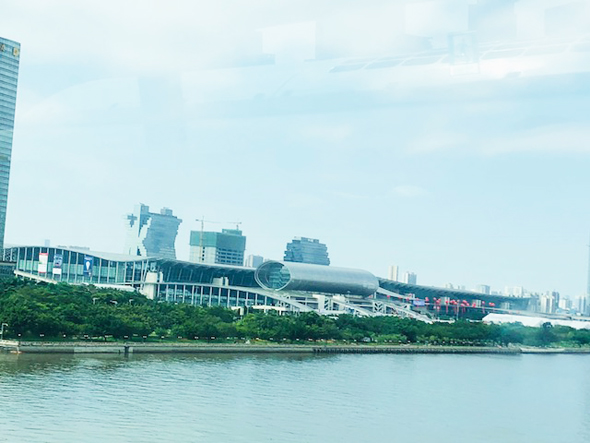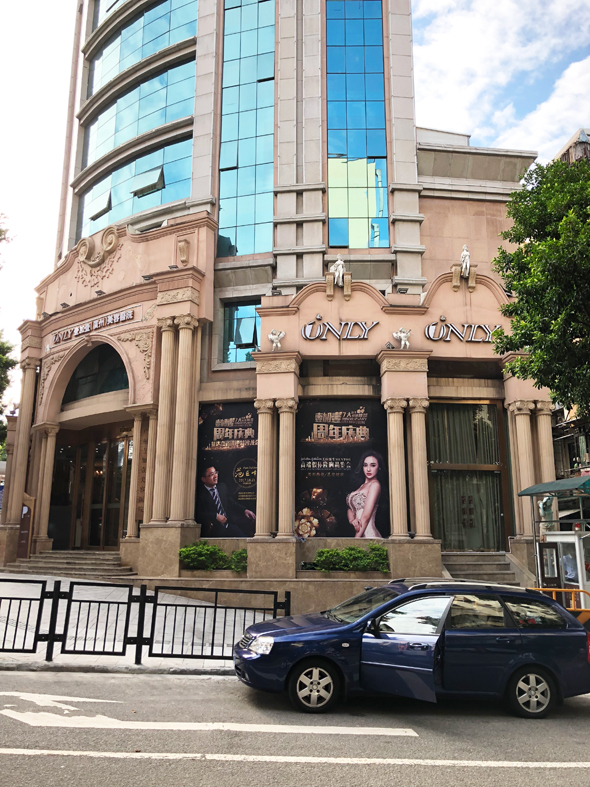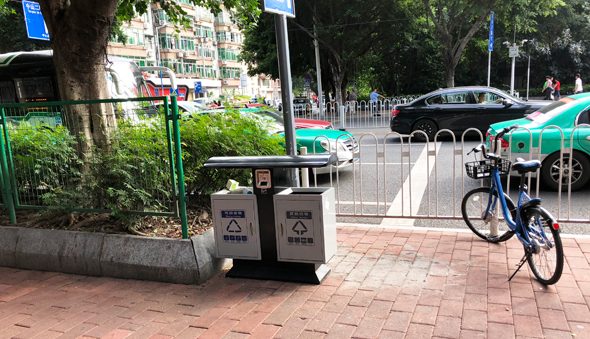Mr. Modi, Tear Down This Wall!
Saved under Community, Current Stories
Tags: Atul Vir, Baytown, Canton Fair, Clear Lake, Cypress, Desi news, Greater Houston, Guangzhou, Houston, Houston Desi news, India, Indian American community, Indian News, Indians in America, Indo-American News, Katy, NRI, pearland, south asia, South India, Sugar Land, Texas, USA
By Atul Vir
GUANGZHOU, CHINA: I am once again in Guangzhou to attend the Canton Fair, the world’s largest exhibition held twice a year in modern, metallic, space-age buildings. Covering about 13 million square feet with more than 60,000 booths, the exhibition showcases the latest products and technology that China has to offer the world. There will be about 250,000 visitors in attendance, here to buy products that will represent a significant part of global trade. I am appreciative of the logistical arrangements the Chinese have made for hotels, buses to ferry us to the show, meals achieved by the meticulous study of western standards of efficiency.
We are stopped at an entry gate and let in in groups of 1000 at a time. The next batch waits patiently while we go through a security check. My mind wanders back to the first time I visited the Canton Fair about 20 years ago. Only two numbers come into focus: 500 million; 20 years. The first number represents the people that have entered the middle class. The second number represents the years it has taken them to get there. It happened in front of my eyes, surprising me each time I visited China on business, now more than 40 times.
These changes have been observed by everyone who has visited China. It is nothing short of a miracle, whether we are talking about the modern roads and highway system rivaling any western country, the new bullet train system, with new tracks and railway stations that look like airports, new bridges, culverts, viaducts, lighting systems and more.
My thoughts invariably lead me to compare this to India. Two peoples, with similar traditional values, thousands of years of history, respect for family and elders, but separated by the Himalayas. Apart from Chinese scholars who came to study Buddhism about 2000 years ago and adopted his teachings, ordinary Chinese know about India only through movies. People over 60 know the song from Raj Kapoor’s 1951 hit, Awaara. Dangal broke through this year and now every young Chinese under 30 has seen it. It seems that no other cultural exchange has passed between our countries in the 65 intervening years.
Only 300 years ago, China and India were responsible for 60% of global trade. Today, China has foreign exchange reserves of $3.5 trillion (compared to India’s $400 billion), which gives it the financial muscle to produce, export, innovate, explore, expand and be ambitious. From being a follower in technology, China now aspires to lead the world with innovation and is the largest recipient of approved patents. The high-speed rail network started only 10 years ago now has 25,000 km of new tracks and driver less trains reaching speeds of 500 km/hour are being tested. It often seems that the progress of the country is also happening at bullet train speed!
While India undoubtedly has brilliant scientists, engineers, doctors and businessmen, as well as a burgeoning middle-class, about one-third of the population is still close to the poverty line. China, on the other hand, is on track to eradicate poverty by 2020 by focusing on developing the quality of life and higher standard of living for its citizens, and a radical clean-up of the environment.
The only way for India to correct the deficiency and develop fast, is to study China and take lessons from them to do so quietly, systematically and without fanfare. There are three ways to learn:
• Establish an exchange program for Indian government official and bureaucrats to visit China to see how to execute public projects, including roads, airports, dams, trains, parks, utilities etc.
• Increase tourism to China. The Chinese are proud of their history and take care of their historical monuments. Every neighborhood has a well-maintained free park and people take walks, do tai chi or block dancing. China is a safe country and as a foreigner I walk about openly, un-escorted by a local, at any time of the day or night. Women walk about without fear and there is rule of law. Drunk drivers are punished with jail time and licenses are revoked.
• Encourage students to visit on holidays or exchange programs, to learn about our largest neighbor and see how they live, witness clean roads, learn about environmental solutions on a grand scale, civic responsibility like not throwing trash on roads, jaywalking, stopping for traffic lights and standing in line to board public transport.
I have done business with large state-owned companies as well as small entrepreneurial companies and visited mega cities and small towns. I have found the Chinese to be without ego or false airs irrespective of the seniority of the person.
One of the most admired traits of China is that everyone is equal. While Mao Tse-tung is known for bringing communism through revolution to China, the basis of this was to have equality for its citizens. Today, while on visits to China, my driver always sits and eats at the same table with other executives and we think nothing of it. He is doing his job, as the others is doing theirs.
The Chinese can be accommodating, willing to listen and be flexible in making rapid changes to my products. I am always treated with respect, and my hosts are genuinely concerned for my well-being, safety and meals. The Chinese stick to their written agreements and they will not intentionally do harm. They genuinely want to deliver the product with the commensurate quality that is agreed on. That does not mean that one does not need to negotiate a fair deal. It just means that if you negotiate to get the bottom price, you will get quality to match.
I understand why it is so difficult for India to reach out. Apart from the loss in the 1962 conflict, there are unresolved border issues with Arunachal Pradesh at the McMahon Line, China’s support for Pakistan and One Belt One Road (OBOR) passing through disputed Kashmir. The Chinese are upset with India hosting the Dalai Lama and his alternate Tibetan government. They believe India is conspiring to break up China.
But we must keep our eye on the ball. 500 million – 20 years. Scale, speed, precision. We may not like it, but we must do it on behalf of the 500 million who do not have a voice, who have nothing, who do not know the possibilities that exist.
Recently, there was the border standoff at Doklam. China was building a road in a disputed area of Bhutan close to the Indian border. One has to think outside the box: why can’t we also build a road to connect to the Chinese road? The entire border area can be declared a free trade zone conducive to trade that will benefit us and motivate us to strive harder for success. We can learn from a country worthy of our respect for their economic achievement. One day we may see bullet trains connect Beijing to Delhi in 24 hours.
The crowd starts moving forward and I come out of my reverie. A Chinese man next to me, also jostling forward asks, “where are you from?” I reply “from India.” He smiles and says simply, “Happy Diwali.” I smile back and thank him. Two people, like our two countries, on opposite sides of the wall, now briefly connecting for a piece of humanness.
Atul Vir is the CEO of Equator Advanced Appliances, a global white goods manufacturer based in Houston. He borrowed the title from former President Ronald Reagan’s call-out to Soviet President Mikhail Gorbachev at the Brandenburg Gate in 1987 to tear down the Berlin Wall.



